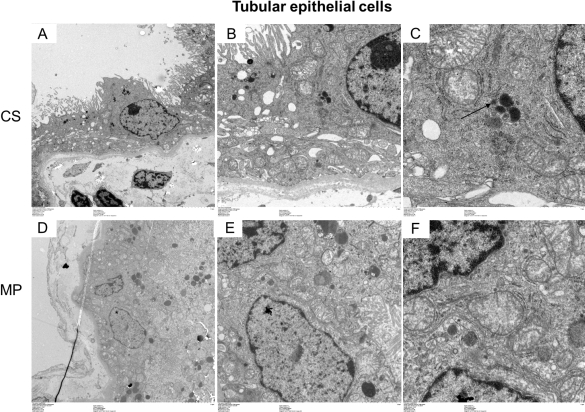Hypothermic Machine Perfusion Improves Kidney Viability through Amelioration of Vasospasm and Edema of Podocytes and Renal Tubular Epithelial Cells
1Zhongnan Hospital of Wuhan University, Institute of Hepatobiliary Diseases of Wuhan University, Transplant Center of Wuhan University, Hubei Key Laboratory of Medical Technology on Transplantation, Wuhan, China
2The 3rd Xiangya Hospital of Central South University, Research Center of National Health Ministry on Transplantation Medicine Engineering and Technology, Changsha, Hunan, China
3Massachusetts General Hospital, Department of Urology, Boston, MA.
Meeting: 2015 American Transplant Congress
Abstract number: 469
Keywords: Donors, Glomerular filtration rate (GFR), Kidney transplantation, Machine preservation, non-heart-beating
Session Information
Session Name: Concurrent Session: Kidney: Risk Prediction
Session Type: Concurrent Session
Date: Tuesday, May 5, 2015
Session Time: 4:00pm-5:30pm
 Presentation Time: 4:12pm-4:24pm
Presentation Time: 4:12pm-4:24pm
Location: Room 120-ABC
Hypothermic machine perfusion (MP) may improve outcome after transplantation from donors after cardiac death (DCD) kidneys, but protective mechanisms of MP remain largely unknown. To compare the effect of machine perfusion (MP) and cold storage (CS) in reducing the rate of delayed graft function (DGF), one of paired kidney from 141 DCD donors was randomly assigned to MP and their other kidney to CS. The results showed that MP decreased the rate of DGF from 33.3% to 21.9% (P=0.036). To further elucidate mechanisms, histologically determined average diameters of renal arcuate arteries in the MP portions were significantly larger than those in the CS portions in the 4 discarded kidneys whose renal arteries were unexpectedly injured during harvesting procedure (P=0.021). The expression of α-smooth muscle actin in vascular smooth muscle in the MP portions was significantly lower (P<0.001), and the thickness of renal tubular epithelial cells in the MP portions also decreased (P<0.001). Furthermore, electron microscopy showed that the MP group had less edema in podocytes and less structural damage and edema of mitochondria in renal tubular epithelial cells. In conclusion, MP reduces DGF rate by ameliorating vasospasm, reducing edema of podocytes and renal tubular epithelial cells, and preserving renal tubular epithelial cellular mitochondrial morphology.

To cite this abstract in AMA style:
Zhong Z, Liu Z, Fu Z, Zhang Y, Ko D, Wang Y, Ye Q. Hypothermic Machine Perfusion Improves Kidney Viability through Amelioration of Vasospasm and Edema of Podocytes and Renal Tubular Epithelial Cells [abstract]. Am J Transplant. 2015; 15 (suppl 3). https://atcmeetingabstracts.com/abstract/hypothermic-machine-perfusion-improves-kidney-viability-through-amelioration-of-vasospasm-and-edema-of-podocytes-and-renal-tubular-epithelial-cells/. Accessed December 27, 2025.« Back to 2015 American Transplant Congress
